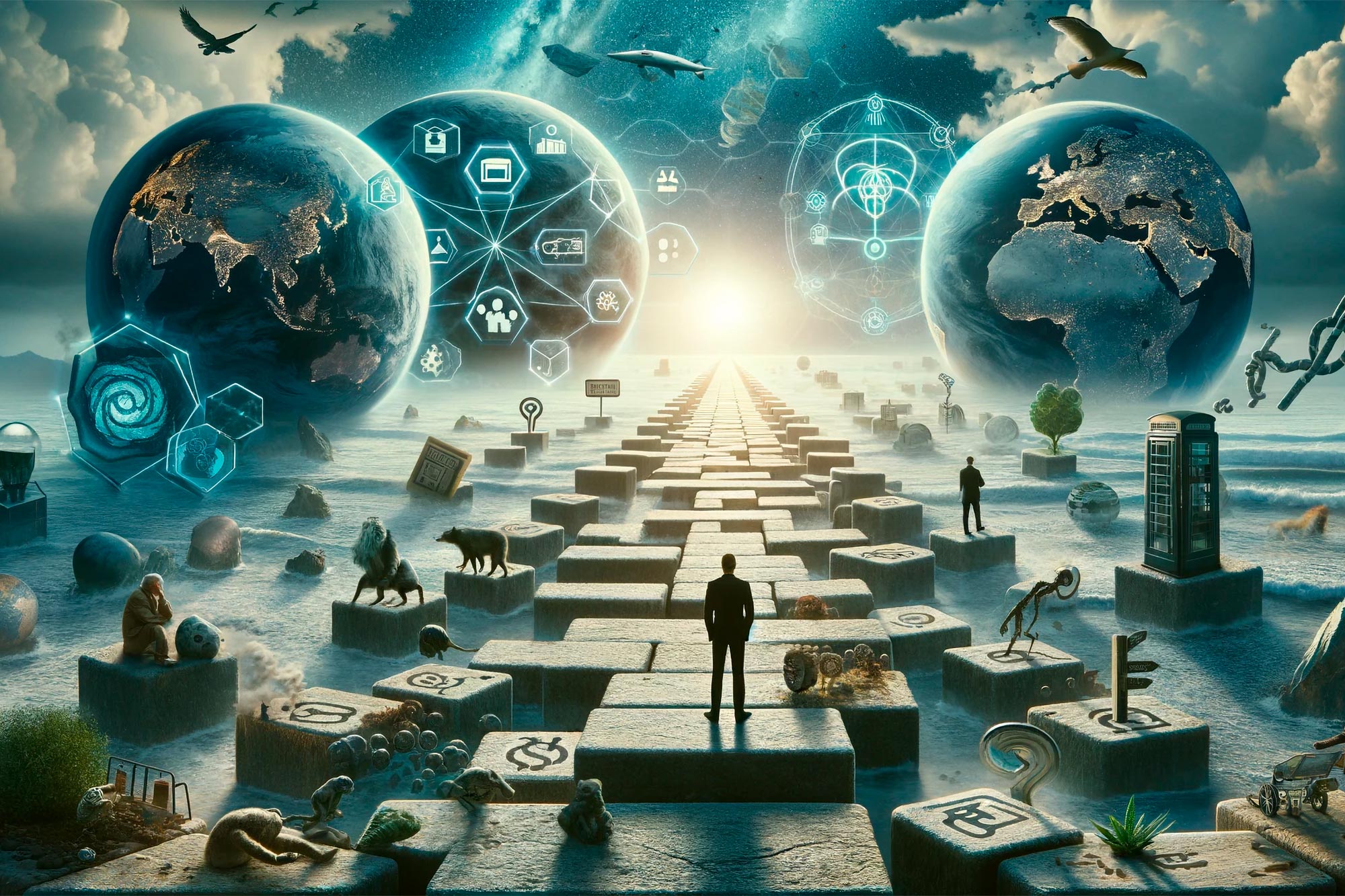A new study reveals that humanity is at risk of falling into 14 evolutionary dead ends, termed “evolutionary traps,” ranging from climate change to artificial intelligence. The research, focusing on the Anthropocene era, highlights the need for global cooperation and active societal transformation to avoid these traps.
Misaligned AI is not the one you should worry most about (yet).
For the first time, scientists have used the concept of evolutionary traps on human societies at large. They find that humankind risks getting stuck in 14 evolutionary dead ends, ranging from global climate tipping points to misaligned artificial intelligence, chemical pollution, and accelerating infectious diseases.
The Anthropocene Era: Success and Challenges
The evolution of humankind has been an extraordinary success story. But the Anthropocene — the proposed geological epoch shaped by us humans — is showing more and more cracks. Multiple global crises, such as the COVID-19 pandemic, climate change, food insecurity, financial crises, and conflicts have started to occur simultaneously in something that scientists refer to as a polycrisis.

(a) System dynamics associated with three major groups of Anthropocene traps, global traps, technology traps and
structural traps (including temporal and connectivity traps). Two reinforcing feedback loops are indicated with R and interactions between dynamics across groups of traps are indicated with colored superscript letters (color of causal node) and stippled lined arrows.
(b) A heatmap of the interactions between outcomes of the 14 proposed Anthropocene traps.
Credit: Philosophical Transactions of the Royal Society B
Human Creativity and Unintended Consequences
“Humans are incredibly creative as a species. We are able to innovate and adapt to many circumstances and can cooperate on surprisingly large scales. But these capabilities turn out to have unintentional consequences. Simply speaking, you could say that the human species has been too successful and, in some ways, too smart for its own future good,” says Peter Søgaard Jørgensen, researcher at the Stockholm Resilience Centre at Stockholm University and at the Royal Swedish Academy of Sciences’ Global Economic Dynamics and the Biosphere program and Anthropocene laboratory.

Peter Søgaard Jørgensen is lead author of the study. He isa researcher at the Stockholm Resilience Centre at Stockholm University and at the Royal Swedish Academy of Sciences’ Global Economic Dynamics and the Biosphere programme and Anthropocene laboratory.
Credit: Stockholm Resilience Centre
A Landmark Study on Evolutionary Traps
He is the lead author of a new landmark study published today as part of a larger assessment in the journal Philosophical Transactions of the Royal Society B. The assessment gathers insights from a wide range of different scientific disciplines across the natural and social sciences and humanities, to understand how the Anthropocene evolved and how global sustainability can continue to evolve in the future.
Identifying and Understanding Evolutionary Traps
The new study shows how humanity could get stuck in “evolutionary traps” — dead ends that occur from initially successful innovations. In a first scoping effort, they identify 14 of these, including the simplification of agriculture, economic growth that does not deliver benefits for humans or the environment, the instability of global cooperation, climate tipping points, and artificial intelligence (for a full list of traps see table further down).
Evolutionary Traps in the Animal World and Human Societies
“Evolutionary traps are a well-known concept in the animal world. Just like many insects are attracted by light, an evolutionary reflex that can get them killed in the modern world, humankind is at risk of responding to new phenomena in harmful ways,” explains Peter Søgaard Jørgensen.
The simplification of agricultural systems is an example of such a trap. Relying on a few highly productive crops such as wheat, rice, maize, and soya, has meant that calories produced have skyrocketed over the past century. But it also meant that the food system has become very vulnerable to environmental change, such as weather extremes, or new diseases.
The Severity and Interconnectivity of Traps
Of the 14 evolutionary traps, 12 are in an advanced state, meaning that humankind is on the verge of getting stuck to a degree where it becomes very difficult to get out. What’s more, societies are continuing to move in the wrong direction in 10 of these 14. Alarmingly, these evolutionary traps tend to reinforce each other. If societies get stuck in one dead end, they are more likely to get stuck in others as well. The two dead ends that currently are less advanced are the autonomy of technology – AI and robotics – and a loss of social capital through digitalization.

Lan Wang Erlandsson, is a co-author and researcher at the the Stockholm Resilience Centre at Stockholm University and the Royal Swedish Academy of Sciences’ Anthropocene laboratory. Credit: Stockholm Resilience Centre
The new assessment also looks into why societies struggle so hard to move out of these traps.
Global Challenges and the Need for Collaboration
“The evolutionary forces that created the Anthropocene do not work well at the global level. In today’s global systems, social and environmental problems grow in places that seem distant to the societies that could prevent them. Also, addressing them often requires global collaboration on a scale that many evolutionary forces often do not align well with,” says co-author Lan Wang-Erlandsson, researcher at the Stockholm Resilience Centre at Stockholm University and the Royal Swedish Academy of Sciences’ Anthropocene laboratory.
A Call to Action for Humanity
This does not mean that humanity is doomed to fail, argue the researchers. But we must start to transform our societies actively. So far, the Anthropocene has to a large extent been an unconscious byproduct of other evolutionary processes.
“It’s time for humans to become aware of the new reality and to collectively move where we want to as a species. We have the capability to do that and are already seeing signs of such movements. Our creativity, and our power to innovate and collaborate equip us with the perfect tools to actively design our future. We can break out of dead ends and business-as-usual, but for that, we must nurture the capacity for collective human agency and design settings where it can flourish,” explains Peter Søgaard Jørgensen.
He continues: “A very simple thing that everybody can do is to engage more in nature and society while also learning about both the positive and negative global consequences of our own local actions. There’s nothing better than exposing yourself to what needs protecting.”
Reference: “Evolution of the polycrisis: Anthropocene traps that challenge global sustainability” by Peter Søgaard Jørgensen, Raf E. V. Jansen, Daniel I. Avila Ortega, Lan Wang-Erlandsson, Jonathan F. Donges, Henrik Österblom, Per Olsson, Magnus Nyström, Steven J. Lade, Thomas Hahn, Carl Folke, Garry D. Peterson and Anne-Sophie Crépin, 1 January 2024, Philosophical Transactions of the Royal Society B.
DOI: 10.1098/rstb.2022.0261

Dr. Sarah Adams is a scientist and science communicator who makes complex topics accessible to all. Her articles explore breakthroughs in various scientific disciplines, from space exploration to cutting-edge research.






